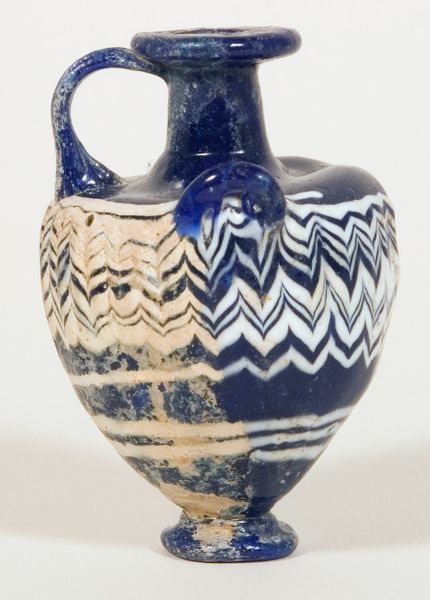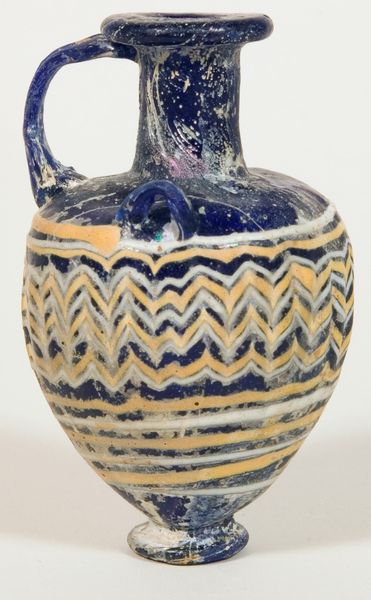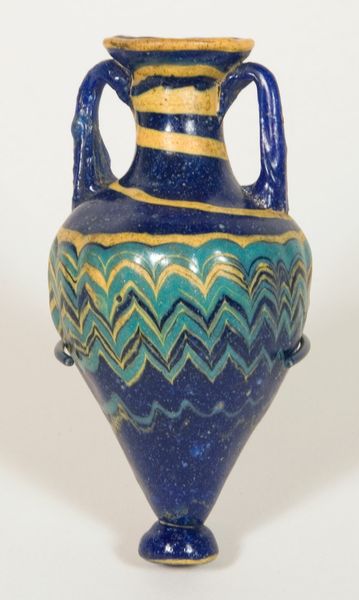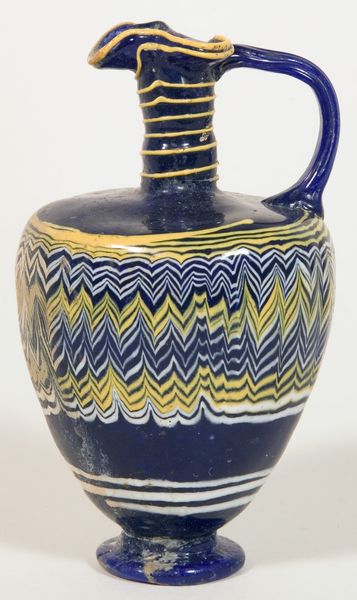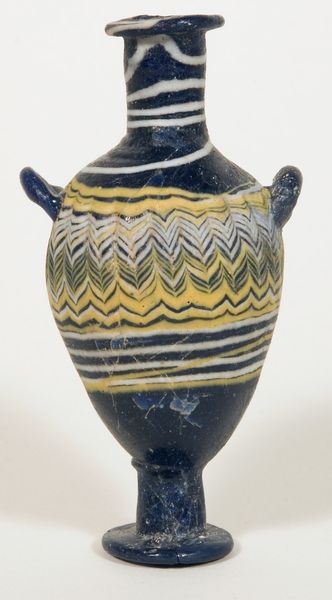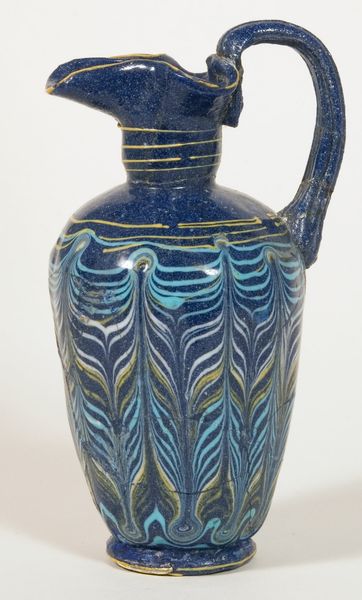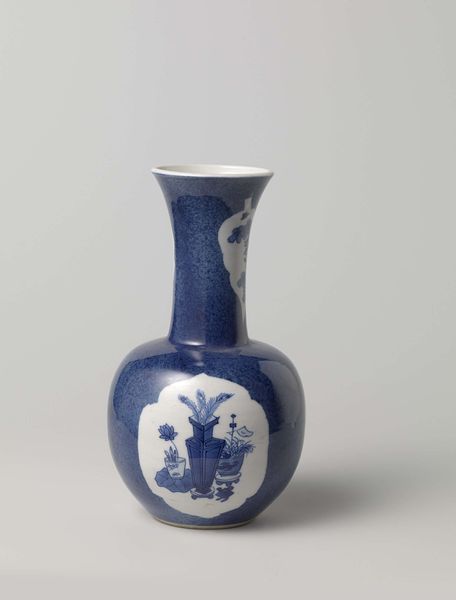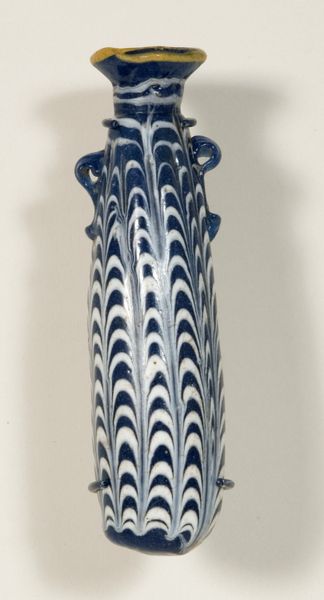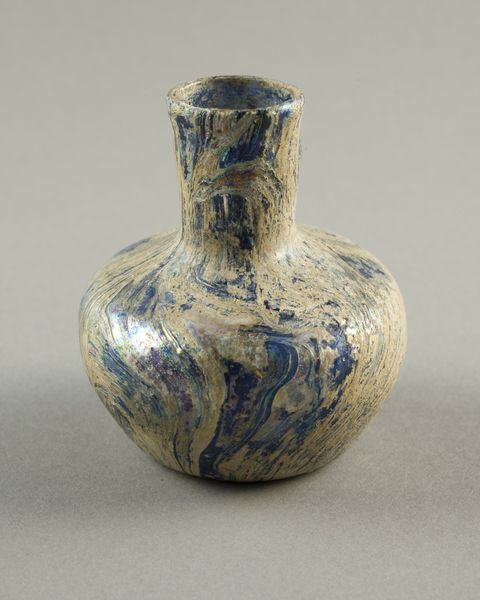
Amphoriskos (Container for Oil) c. mid to early 4th century
0:00
0:00
ceramic, glass
#
ceramic
#
glass
#
geometric
#
ancient-mediterranean
#
ceramic
Dimensions: 6.7 × 4.5 × 4.5 cm (2 5/8 × 1 3/4 × 1 3/4 in.)
Copyright: Public Domain
Editor: Here we have a stunningly well-preserved artifact from the ancient Eastern Mediterranean: an amphoriskos, or container for oil, dating to the mid-to-early 4th century. Crafted from ceramic and glass, the deep blue juxtaposed with the sharp zigzag patterns feels very modern. What do you see in this piece? Curator: Immediately, I am struck by the dynamic tension created by the zigzags. Think about how patterns are used in cultures: They communicate membership, status, beliefs. In the context of a container, it suggests movement, perhaps even transformation, as if the liquid held within is never still. The repetition itself might hold symbolic power—a reminder of cycles or a depiction of water. What kind of continuity might it evoke? Editor: So, it’s not just decorative, but almost like a story etched in glass? Does the type of container, an amphoriskos, contribute to this symbolism? Curator: Precisely. An amphoriskos held oil, often used in rituals, perfumery, or even funerary rites. The vessel literally contains memory; its contents imbued with symbolic and practical value. The striking blue, reminiscent of precious lapis lazuli, also hints at value and importance. These weren’t everyday objects; they were imbued with a sense of specialness. Editor: That’s fascinating. It's like a multi-layered message in a bottle, not just about oil, but about the values of the culture it came from. I hadn't considered all of those layers! Curator: Indeed. And that interplay between material, form, and decoration – it all speaks to cultural memory, reminding us of shared beliefs and practices across millennia. It is amazing.
Comments
No comments
Be the first to comment and join the conversation on the ultimate creative platform.
